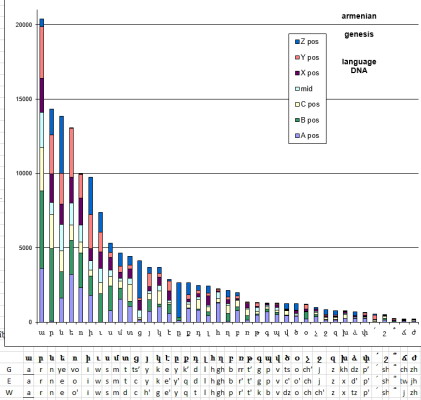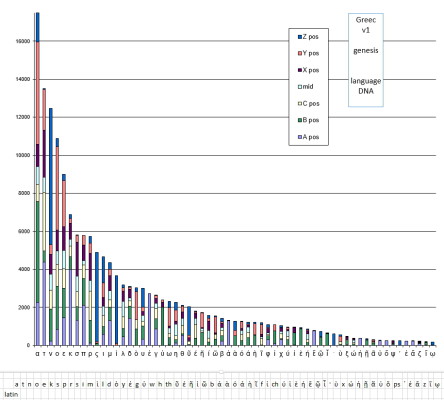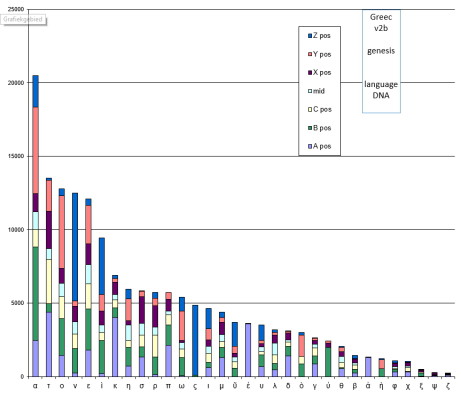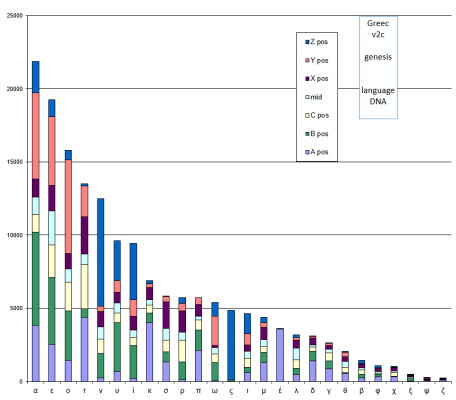Armenian and Greek
2015
When a language has specific language DNA characteristics it will be selected for further analysis and when possible i will try test-decryption.
The specific language DNA characteristics for the VMS are:
- there must be a possibility to shrink the language to 16 of 17 active characters
- there must be at least some VMS characteristics that could be linked to the language:
- 1 letter with 50% or more Z-pos
- 1 or 2 letters with no A-pos
- not all letters have Z-pos
- written language has a ‘letter image’ that could be mapped to the VMS
- average length of words is normal (5-7)
As preferred languages I selected:
- Armanian
- Greek
Armenian
As usual i first take Genesis for the languages of interest and make a language DNA map:
G= Google transliteration
E= Eastern ,,
W= Western ,,
Armenian: the first observations are:
- there are too much letters (39 of which 2 are just signs)
- the letter ‘y’ indeed behaves like the VMS letter ‘n’
- the letter ‘ts`’ behaves like the VMS letter ‘y’
- the letter ‘a’ behaves like the VMS letter ‘o’
- the letter ‘r’ behaves like the VMS letter ‘h’
Now, after having done this and looking into the Armenian culture and language. I studied and searched for work and translations of Anania Shirakatsi and came to the conclusion that the VMS must be a sort of a mixture of languages, just as he used to write in different languages for at least Greek and Armenian. Possibly variants from the Caucasian region at that time (650 AD)?
After many attempts it seems almost impossible to get cooperation from someone at the Armenian national museum by e-mail. Also I could not find any source of the Armenian bible, part Genesis. Some parts of Armenian text i got through French and Brittich sources. This makes it unfortunately rather impossible to focus more on Armenian, although I am really fascinated by the country.
Greek
Now i am excited. As can be seen we do not only have a bar with a full Z-pos,
but also a full bar with A-pos and on top of that we have bar which starts with B-pos !
Let’s now try to merge some letters.
Many remarkable features in the Greek language that correspond to the VMS:
- the determimnators ‘the’ in female and male form are ‘o’ and ‘το’ and ‘η’
- for example: a cite name: Ο Πειραιάς (Piraeus) or το παιδί (the child) or η πισίνα (the swimming pool)
- the ς and ἐ can be mathed directly to the VMS.
The O has a very high count in the VMS so i looked at the 1-letter words, all the n-grams and the building blocks of words in general. The most repeated word Greek ‘kai’ (maining and, and the) could be a candidate for the most repeated words in the VMS:
top 5 words CAB NST2:
| daiin | 1368 |
| chedy | 1232 |
| qokee | 777 |
| kaiin | 770 |
| c6hed | 750 |
![]()




